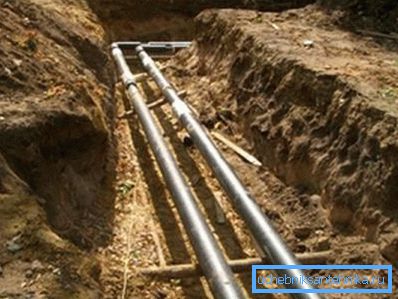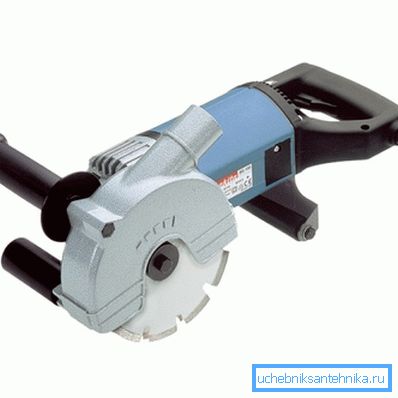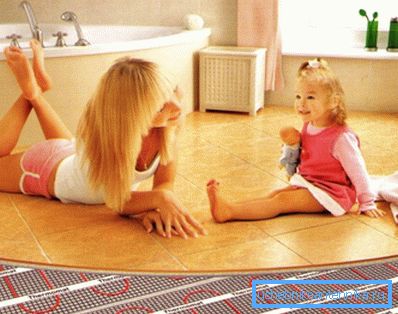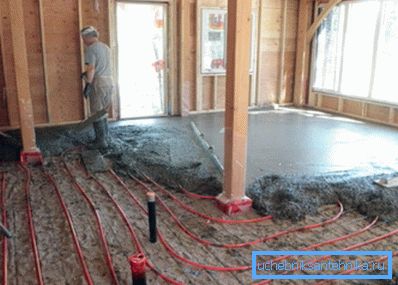Heating pipe laying: 3 main ways
Every good owner should make sure that his house is warm and cozy. For this purpose, a heating system of pipes is being built in the rooms, capable of maintaining a comfortable temperature even during the most frosty winter nights. We will talk about how this is done correctly in this article.

External trunk
For owners of apartments and private houses in the city, it will be useful to first familiarize yourself with the specifics of connecting to centralized heating, which can be done underground or above ground. The most common is the use of the first option, so that we dwell on it.
Underground gasket
Installation of pipes in the ground, in turn, can also be of two types:
- Channel. In this case, special equipped trenches are preliminarily created to protect the pipeline from aggressive external influences. Channels are:
| Channel type | Its features |
| Passageway | Able to accommodate a large number of pipes, ensuring free access to them for maintenance |
| Halfway through | It has a simpler arrangement with a rare access to the highway |
| Passable | The pipeline is limited to only one type: reverse or feed |

- Channelless. Here, the price of land works is significantly reduced along with the time and their implementation. But this greatly complicates the possibility of repair work in the event of an accident.

Tip: if you are laying pipes directly into the ground without arranging protective channels, it is recommended to use modern products with a reinforced shell. This will reduce their risk of injury and, consequently, the need for maintenance.
Internal heating system
Regardless of whether you are connecting from a city network or you already have an autonomous boiler, you can open pipes, hidden or underground, in the house.
Open - 1 way

Such placement of pipes and radiators is most common, especially in old apartments. (See also the article Metal pipes for heating: features.)
Its advantages are obvious:
- Ease of doing it yourself. In total, everything boils down to installing special hooks into the walls around the perimeter of the room, on which heating elements are then fixed.
- Ease of maintenance. Open access allows you to inspect and, if necessary, repair the structure without time-consuming dismantling.
- Low implementation cost. There is no expensive decorative trim.
- The possibility of using pipes from any material, as there is no danger of rupture in case of thermal expansion.
But there are reasons why today they are increasingly resorting to other methods of arranging the heating system - these are some drawbacks:
- Injury risk The possibility of getting a burn as a result of an accidental touch is quite high.
- Lack of attractiveness. With open pipes it is very difficult to implement any unusual design solutions.
- Irrational distribution of heat flow. We all remember from the school course of physics that warm air rushes up, and here too the path of its movement runs along the walls to the ceiling. The center of the room, where tenants are usually located, receives only a fraction of the heat.

Hidden - 2 way

In this case, two of the problems of the previous method are solved:
- Aesthetics. All elements are stacked in shade and closed with a decorative finish, which allows you to equip the interior of your house in any design style.
- Security. Closed pipes should not be burned.
But there are new ones:
- Drop in efficiency. After all, now we have to warm up the facing layer. (See also the article Distribution of heating pipes: features.)
- Time consuming installation instructions:
- First, the grooves are cut.
Tip: to create a strobe is recommended to use an electric wall chaser. Such a tool will greatly facilitate and speed up the task.

- Then the pipes are laid and fixed with clips.
- Connection to the source of coolants.
- Dressing.
- The complexity of the implementation of repair work.
- Additional costs for the implementation of decorative finishes.
Underground - 3 way

This option refers to those with whom you should suffer once, so that you can enjoy their benefits for many years:
- The most rational distribution of heat flow. Heat spreads directly above the floor, where the inhabitants of the house stay. This allows you to significantly save on energy.
- No visible items, which eliminates the possibility of injury and any impact on the surrounding interior.
The only negative is the complexity of the installation, which is usually carried out in the floor screed. In this case, you can choose one of two systems:
| Title | Special features |
| Water floor heating | Heating is carried out using water, as in the classic radiator heating, additionally needs to be forced to circulate. |
| Electric floor heating | Heating is carried out using a heating cable, therefore, the nutrient is electricity. |
Conclusion
Heating today can be implemented by one of three methods. Each of them has its own positive and negative sides. Choose the most suitable for your situation.

The video in this article will introduce you to more information. The heating system of your home requires a responsible attitude.